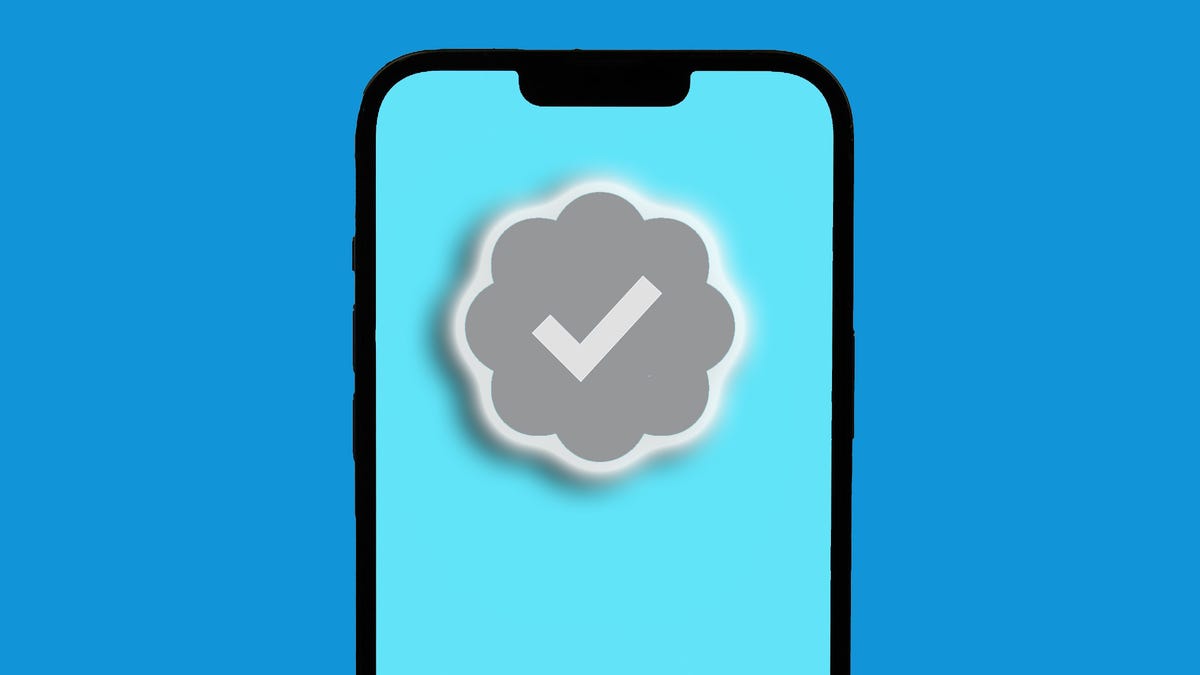Twitter Briefly Added Gray Check Marks for Official Accounts. Then Musk 'Killed It'
"Blue check will be the great leveler," he tweets Wednesday.

For a hot minute, Twitter had a gray version of its verification check mark.
Twitter briefly rolled out gray check marks for official accounts on Wednesday, distinct from the blue check mark that it's starting to charge for. However, the gray checks quickly vanished from accounts after new company owner Elon Musk apparently stepped in.
"I just killed it," he tweeted after tech influencer Marques Brownlee highlighted the rollback. "Blue check will be the great leveler."
I just killed it
— Elon Musk (@elonmusk) November 9, 2022
The new verification check mark was visible on the CNET's Twitter account early Wednesday but subsequently vanished.
The rollback of Twitter's new verification system underscores some of the rapid yet messy changes the social media platform is going through under Musk's leadership. Musk, who also runs Tesla and SpaceX, finalized his $44 billion acquisition of Twitter just two weeks ago, on Oct. 27.
Separately, Musk tweeted a warning Wednesday that "Twitter will do lots of dumb things in coming months," hinting at more rapid shifts. "We will keep what works & change what doesn't." Musk added in a live audio chat on Twitter that the gray check mark that came with an "official" label was an "aesthetic nightmare" and another way of "creating a two-class system."
The new check mark was visible below Twitter handles, but it's gone now.
The rollback also came after Twitter's Esther Crawford, who works on Twitter Blue, highlighted the gray check marks on Tuesday. They were intended for government accounts, companies, major media outlets, publishers, "business partners" and "some public figures," she said, and you wouldn't have been able to pay for them.
Crawford spoke up again on Wednesday in the wake of Musk ending the feature.
"There are no sacred cows in product at Twitter anymore. Elon is willing to try lots of things -- many will fail, some will succeed," she said. "The goal is to find the right mix of successful changes to ensure the long-term health and growth of the business.
There are no sacred cows in product at Twitter anymore. Elon is willing to try lots of things -- many will fail, some will succeed. The goal is to find the right mix of successful changes to ensure the long-term health and growth of the business. https://t.co/cMf27EmmpJ
— Esther Crawford ✨ (@esthercrawford) November 9, 2022
Replying to a query about the vanishing gray check mark, Crawford said the label isn't dead.
"We are just focusing on government and commercial entities to begin with. What you saw him mention was the fact that we're not focusing on giving individuals the 'Official' label right now," she said.
As of early Wednesday, the gray check mark wasn't visible on the accounts of government entities like the White House, the Department of Homeland Security or the United Nations.
Musk last week announced that he wants to charge $8 a month for a subscription plan that includes a blue verified check mark on accounts. It would also feature priority in replies, mentions and search results; the ability to post long video and audio clips; and seeing half as many ads.
Twitter Blue, which was previously priced at $5 a month, didn't include the blue check mark, which was only given to verified accounts.
"The new Twitter Blue does not include ID verification -- it's an opt-in, paid subscription that offers a blue checkmark and access to select features," Crawford added. "We'll continue to experiment with ways to differentiate between account types."
Twitter was already grappling with fake accounts after rolling out a new verification system. One account with a check mark that has been suspended pretended to be Twitter and falsely claimed in a tweet that cryptocurrency and those with assets known as nonfungible tokens could get a Twitter Blue subscription for free.
In a live audio chat on Twitter, Musk said that charging for verification could make creating fake accounts more costly for scammers. If someone tries to impersonate a brand, he said, Twitter will suspend the account but keep their money as they try to create new ones.
"Of course, they will try, but it starts to get expensive and they start to need a lot of credit cards and a lot of phones and eventually they will stop trying," Musk said.





